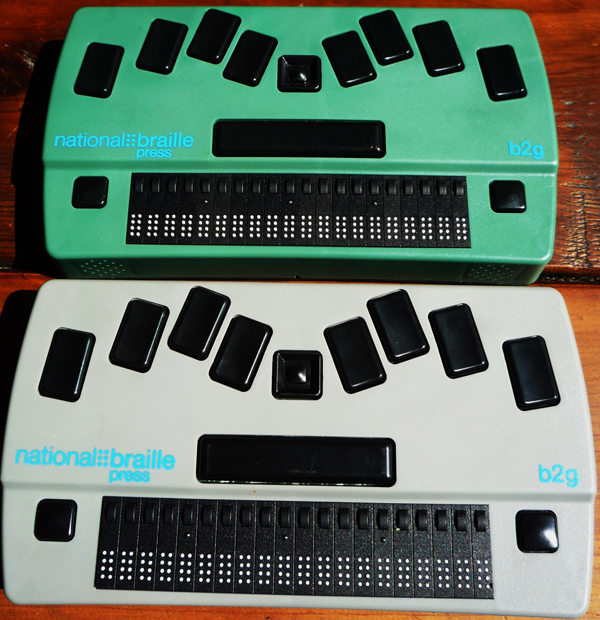In 1970, more than half of blind American schoolchildren could read Braille. Now, only about 10% can. (We guess the numbers shouldn't be very different in India.) That decline is mostly a consequence of a change of policy, where visually impaired children are being taught, as far as possible, alongside their sighted peers. Since most people in a class of both the sighted and the blind will have no use for Braille, and most teachers no knowledge of it, its neglect is hard to avoid. Moreover, as the number of those who can read Braille declines, so does demand for books written in it. That, in turn, means fewer such books are being embossed - reducing yet further any incentive to learn the system in the first place.
Louis Braille’s patterns of raised dots, detectable by the fingertips and used to signify letters, numerals, punctuation marks, musical notation and mathematical symbols, which he invented in 1821, may be on the way out.
In a world of recorded sound, text-to-voice translators and voice-activated software, the withering of Braille might not be thought to matter much. But it does. Only a quarter of blind Americans of working age actually have jobs, and it is surely no coincidence that almost all of them can read Braille.
Braille may, however, be about to enjoy a comeback. Until now, technology has been its enemy. But it could become its friend, as a new generation of tablet computers with specially designed Braille displays is developed.
One route, being explored by the Braille Press itself, in conjunction with the Massachusetts Institute of Technology, is to make screens out of a ceramic that changes shape when exposed to electric currents.
 |
| (c) NBP, Boston, MA, USA |
National Braille Press, in Boston, MA, USA, is developing b2g (Braille to Go), which is a portable, refreshable braille computer and optional smart phone, designed specifically for blind people. It weighs 20 ounces, has good processing speed, and 32GB of internal memory.Slightly larger than a 7 inch tablet, the b2g is a small but powerful computer that has our own originally designed ergonomic braille keyboard for data entry, with a 20 cell braille display for output.It is based on an electro-mechanical approach that uses Nitinol, a shape memory alloy, as the actuation method. This version will have five rows of braille, 40 cells across, plus a graphic array comprised of closely spaced pins that will render graphics and images on demand.
A second, developed by Disney as part of a wider project and known as electrostatic haptics, is to generate vibrations in parts of the screen. These trick the fingers into perceiving those areas to be raised or textured, when they are not.
 |
| (c) Disnery Research |
The most developed approach, though—a prototype of which will go on show on June 23rd at the World Haptics Conference in Chicago—is the brainchild of Sile O’Modhrain and Brent Gillespie at the University of Michigan, Ann Arbor. It uses a pleasingly 19th-century technology, pneumatics, to generate Braille symbols.
The screen of the device includes a grid of pins the diameter of Braille dots. Normally, the tops of these pins are flush with the screen’s surface. When needed, though, they can be pushed upwards to create patterns representing Braille symbols. This is possible because each pin rests on a silicone-rubber membrane that sits above a small cavity. The cavity is, in turn, connected to a tiny pneumatic line and valve. When air is blown through the valve into the cavity, the membrane balloons up, pushing the pin above the screen’s surface. When the valve is opened and the air released, the pin returns to its hidey-hole.
The prototype on show in Chicago has a grid of 56 pins (eight across and seven down), which lets it display two rows of characters, with spaces between them. But Dr O’Modhrain reckons it should be possible to scale it up to the size of a normal tablet, which would mean it could have 12,500 pins and thus display 26 lines, each 40 characters long. A device this size would weigh about twice as much as a conventional tablet and might cost, Dr O’Modhrain reckons, $1,000.
Bringing Braille into the information-technology era in this way could give it a new lease of life. And that is only right, for it was, in effect, the first method of digital communication.
Source: The Economist

No comments:
Post a Comment